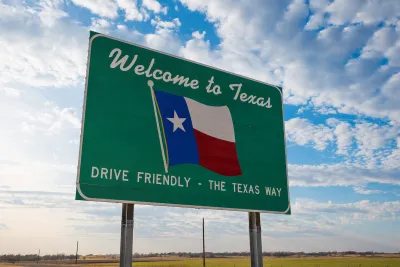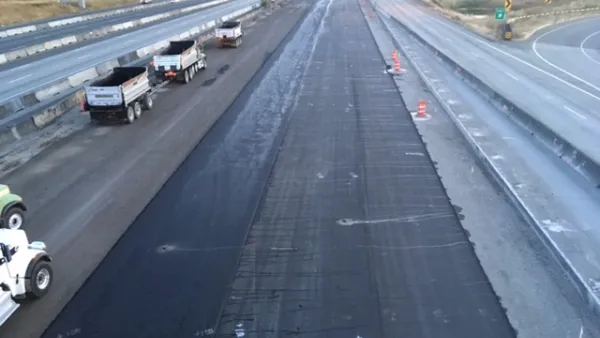Transit advocates say the state’s carbon reduction strategy reveals a continued preference for car-oriented infrastructure.

Texas transportation advocates say the state Department of Transportation’s ‘Carbon Reduction Strategy’ does “the bare minimum” to reduce emissions in the transportation sector, writes Erin Douglas in the Texas Tribune, noting that the document is a requirement to receive federal transportation funds.
“According to the TxDOT draft document, a chunk of the Infrastructure Investment and Jobs Act money will be transferred to a highway program, and the agency says highway expansions could be eligible for the funds because they will reduce congestion, thereby reducing emissions from idling cars.” As Douglas explains, the plan projects an increase in vehicle miles driven as the state’s population grows and promotes highway projects as a way to reduce congestion, although “Both public transportation and environmental advocates are critical of the agency’s argument that improving traffic flow will reduce carbon emissions from vehicles.”
Douglas adds, “The draft strategy doesn’t use the words ‘climate change’ and nor does it state the importance of reducing emissions to avoid worsening effects of climate change.” Meanwhile, TxDOT largely places the burden of building public transit on local agencies, though “The draft strategy also includes improvements in bicycling and walking infrastructure and projects that support the use of public transportation, such as pedestrian bridges.”
FULL STORY: Texas could spend federal funds meant to cut carbon emissions on highway projects

National Parks Layoffs Will Cause Communities to Lose Billions
Thousands of essential park workers were laid off this week, just before the busy spring break season.

Retro-silient?: America’s First “Eco-burb,” The Woodlands Turns 50
A master-planned community north of Houston offers lessons on green infrastructure and resilient design, but falls short of its founder’s lofty affordability and walkability goals.

Delivering for America Plan Will Downgrade Mail Service in at Least 49.5 Percent of Zip Codes
Republican and Democrat lawmakers criticize the plan for its disproportionate negative impact on rural communities.

Test News Post 1
This is a summary

Test News Headline 46
Test for the image on the front page.

Balancing Bombs and Butterflies: How the National Guard Protects a Rare Species
The National Guard at Fort Indiantown Gap uses GIS technology and land management strategies to balance military training with conservation efforts, ensuring the survival of the rare eastern regal fritillary butterfly.
Urban Design for Planners 1: Software Tools
This six-course series explores essential urban design concepts using open source software and equips planners with the tools they need to participate fully in the urban design process.
Planning for Universal Design
Learn the tools for implementing Universal Design in planning regulations.
EMC Planning Group, Inc.
Planetizen
Planetizen
Mpact (formerly Rail~Volution)
Great Falls Development Authority, Inc.
HUDs Office of Policy Development and Research
NYU Wagner Graduate School of Public Service





























